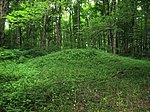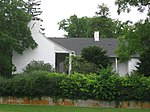Little Miami Scenic Trail

The Little Miami Scenic Trail is the fourth longest paved trail in the United States, running 78.1 miles (125.7 km) through five southwestern counties in the state of Ohio. The multi-use rail trail sees heavy recreational use by hikers and bicyclists, as well as the occasional horseback rider. Over 700,000 people made use of the trail in 2014.Most of the trail runs along the banks of the Little Miami River, in a dedicated, car-free corridor known as Little Miami State Park. This unusually linear state park passes through four counties, with a right-of-way running about 50 miles (80 km) long and averaging 66 feet (20 m) in width for a total of about 400 acres (160 ha). Elsewhere, the corridor ranges from 8 to 10 feet (2.4 to 3.0 m) in width.The Little Miami Scenic Trail is signposted as State Bike Route 1 south of Xenia and State Bike Route 3 throughout. It is the backbone of a nearly continuous network of paved multi-use trails, centered on the Miami Valley area, that stretches 330 miles (530 km) and connects the Cincinnati, Dayton, and Columbus metropolitan areas. The Little Miami trail is an incrementally growing section of the Buckeye Trail and North Country National Scenic Trail, while the trail south of Xenia also forms the southern leg of the Ohio to Erie Trail and part of U.S. Bicycle Route 21.
Excerpt from the Wikipedia article Little Miami Scenic Trail (License: CC BY-SA 3.0, Authors, Images).Little Miami Scenic Trail
Little Miami Scenic Trail, Miami Township
Geographical coordinates (GPS) Address Nearby Places Show on map
Geographical coordinates (GPS)
| Latitude | Longitude |
|---|---|
| N 39.80723 ° | E -83.88795 ° |
Address
Little Miami Scenic Trail
Little Miami Scenic Trail
45387 Miami Township
Ohio, United States
Open on Google Maps








